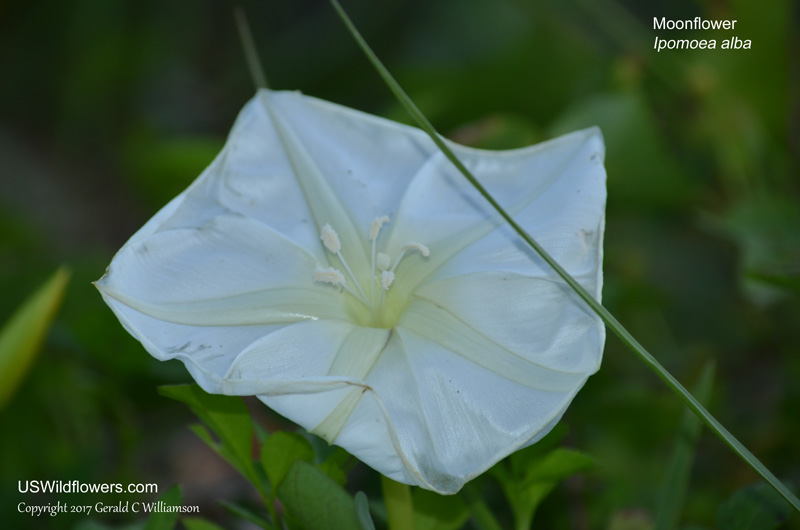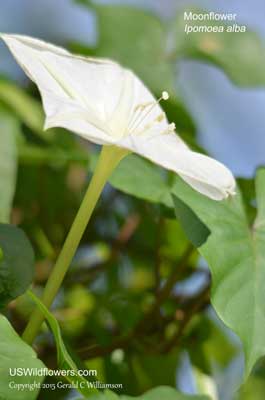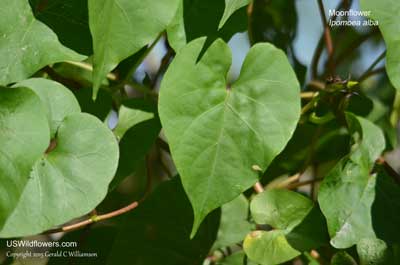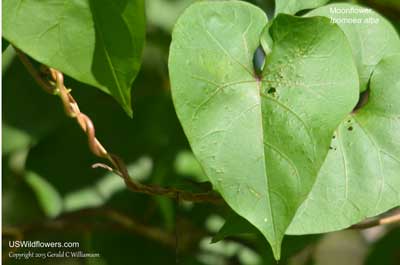Wildflowers of the United States | |||||||||||||
| |||||||||||||
Ipomoea alba - Moonflower, Tropical White Morning Glory, Moon Vine, Evening Glory. Ipomoea is a large genus of well over 600 species worldwide, and over 60 in the United States. There is an Ipomoea species found in every state except for Idaho and Alaska (but those two states have members of the Convolvulaceae family present - the very similar genera Calystegia and Convolvulus.)
| While the Morning Glory name is applied to most plants in the genus because their flowers, which can be especially glorious when large numbers are blooming, will close up or wither later in the day as the bright sun shines on them. However, that is not the case with Ipomoea alba - instead it opens later in the day and stays open on into the evening, yielding the common names Moonflower, Moon Vine, and Evening Glory. Ipomoea alba is a tropical vine (a liana), being found mostly in Mexico, Central America and northern South America. Most authorities believe it to be native to Florida (and possibly Louisiana and Texas), but it is a non-native, naturalized plant in the few other states where it is found, probably because it is frequently used in gardens, as annuals in areas of the country not warm enough to allow it to survive as a perennial. Synonym: Calonyction aculeatum Found in: AL, FL, HI, KS, LA, TX Leave comments on Ipomoea alba at this link.  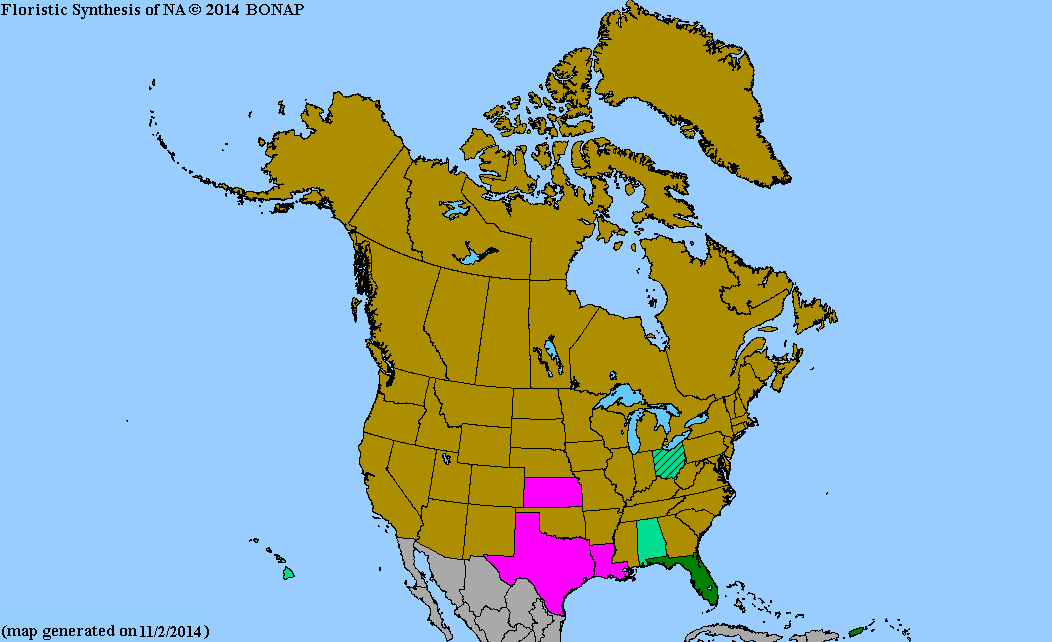 Map courtesy of The Biota of North America Program. Map color key Search Our Database: Enter any portion of the Scientific, Common Name, or both. Do a general Google search of the entire site: #ad
| #ad
| | ||||||||||
|
Commercial / Cookie Notice Looking for Wildflowers for a specific state? Check here: | |||||||||||||
|
All content except USDA Plants Database map Copyright Gerald C. Williamson 2025 | |||||||||||||
Code Update 20230302

